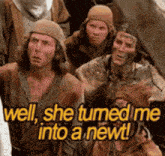ChapelHillSooner
Iconic Member
- Messages
- 1,231
This time they are screwing it up early rather than right at the tail end of their term.Dubya left the economy in shambles for Obama, and his dad didn't leave such a great economy for Clinton. It's the Republican way and represents the current vicious cycle we've been in since Clinton. GOP President screws up the economy, Democrat gets elected POTUS and after several years fixes the GOP's mess, then voters develop mass amnesia and elect a GOP president who screws everything up again, voters elect Democratic POTUS who once again fixes the mess, then voters elect another Republican who messes it up, and on and on apparently.
That may make a difference in public perception.
Note: Dot com happened early in Bush 2 but I think it was far different - Bush policies had nothing to do with it, the fallout was limited to stock markets and the tech sector, and 9/11 changed the narrative.


